

This is an overview of our Eunos Roadster (Mazda MX-5 / Miata) EV conversion. Our 'MX-5e' is our initial build and test platform to learn on. We are also testing some components we plan to use in our OSSEV®. It will not make financial sense to a lot of people but, we are not just investing in a car. The planned £24,000 costs include a complete restoration, an 'as new' rebuild, the EV conversion, a full respray of the car and to register it as an EV with the DVLA.
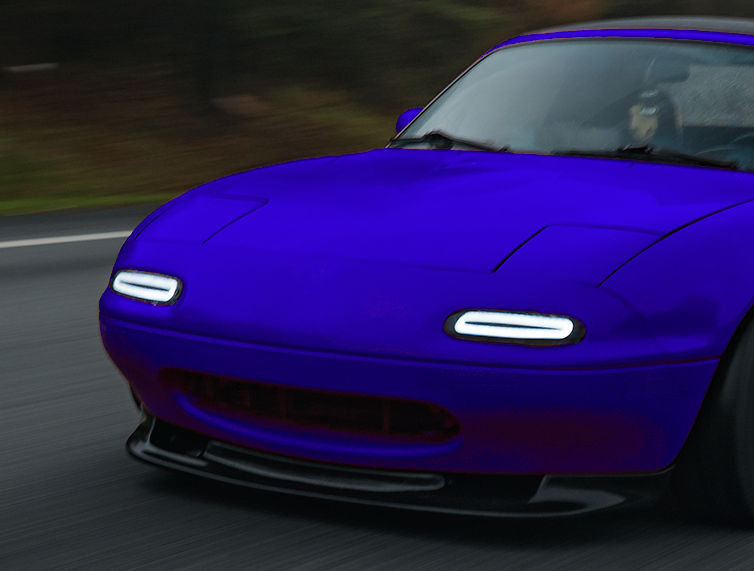
Unlike the sympathetic restoration that we did on Ethan's Yoko, we are planning to drag this 30+ year-old car into the future. It has to be a car that our whole family enjoys, so it is not going to be an extreme sports car like Rob's Fisher Fury R1. It will be a proper driver's car though 😎
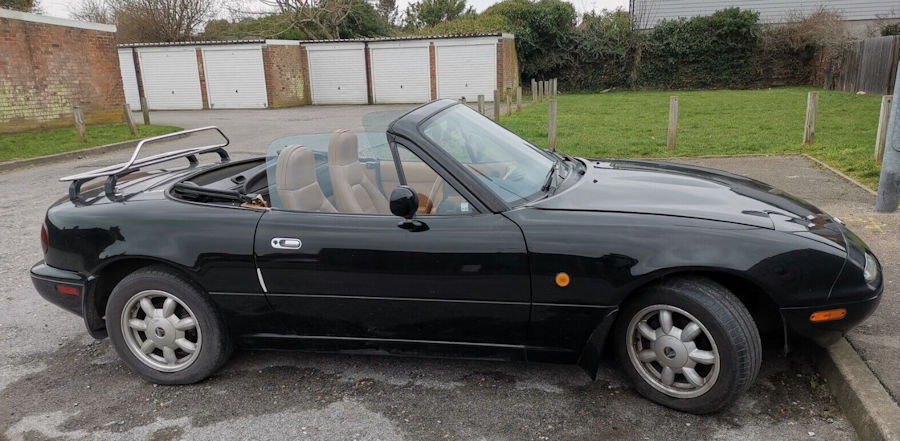
In March 2023 we purchased a 1992 Eunos Roadster V-Spec (Japanese import mk1 Mazda MX-5 NA) for £1425. It was an automatic with black paintwork and a tan interior. We aim to learn a lot whilst converting it to EV and are using it as a test platform for some of the components we are developing and using in our OSSEV®. Some of the many changes are documented as separate projects.
The goal is that we end up with a better sports car than the one we started with. It will be lighter, faster, more involving to drive and also be a much nicer place to be. It will retain the simplicity and lack of intervention that a driver's car requires. There will be no anti-lock brakes, traction control, lane departure warnings or many of the safety systems that nag you in modern cars. It will have many useful features that you can use if you want to though.

Rob doesn't name his cars but, the rest of the family does. Over dinner, we agreed on a name which is a little bit more catchy than 'MX-5e'. Kaminari is (re)born. Or Kami for short. It is Japanese for lightning (or thunder). This kanji will feature on the completed car.
There are a lot of things that we have removed to reduce the weight, improve the centre of gravity and to maintain a good weight distribution. This includes, the air conditioning, the air intake system, the radiator, fans, header tank and cooling pipework, the luggage carrier, the engine and gearbox, the wiring loom and ECU, the exhaust system and heat shields, the fuel tank and fuel pipework, the soft top and frame, the power steering, etc.
We are maintaining a weights spreadsheet where we are weighing everything removed from the car and added to it. Some things are estimated for now.
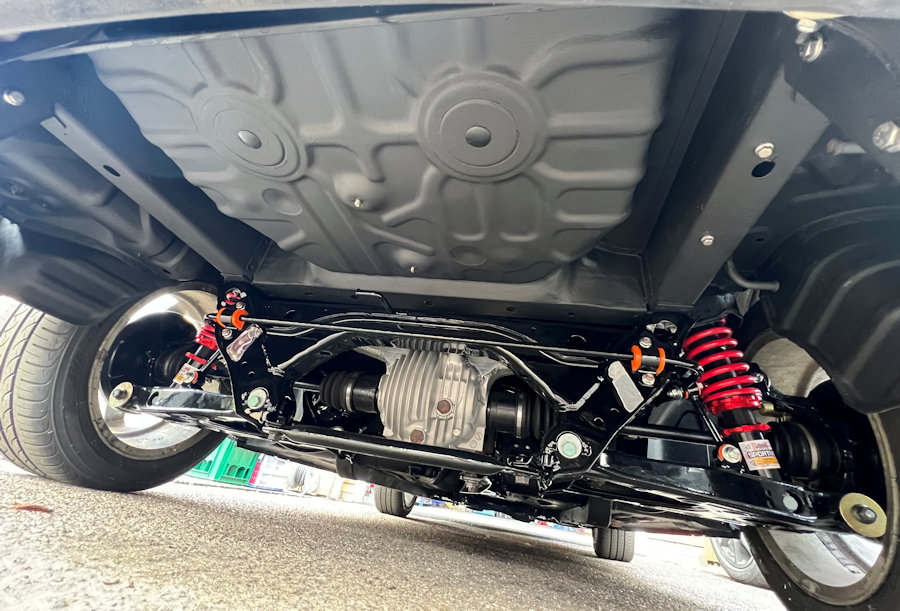
The underside of the car has been completely stripped and all the old underseal removed. The brake lines, fuel lines, petrol tank, etc. were also removed. The car was then rust treated and painted with Buzzweld glass reinforced primer and then painted with several coats of Buzzweld WAR underseal. It is now better than new underneath.
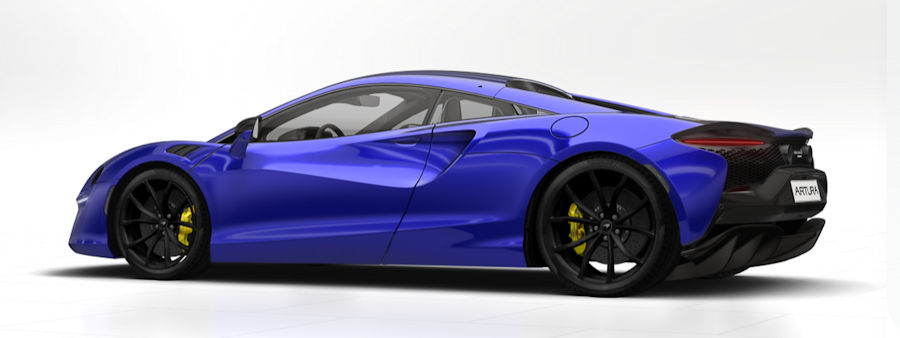

We don't need as much cooling as the MX-5 with an ICE. We are fitting a stainless steel Zunsport grille in black and the towing eyes have been removed.
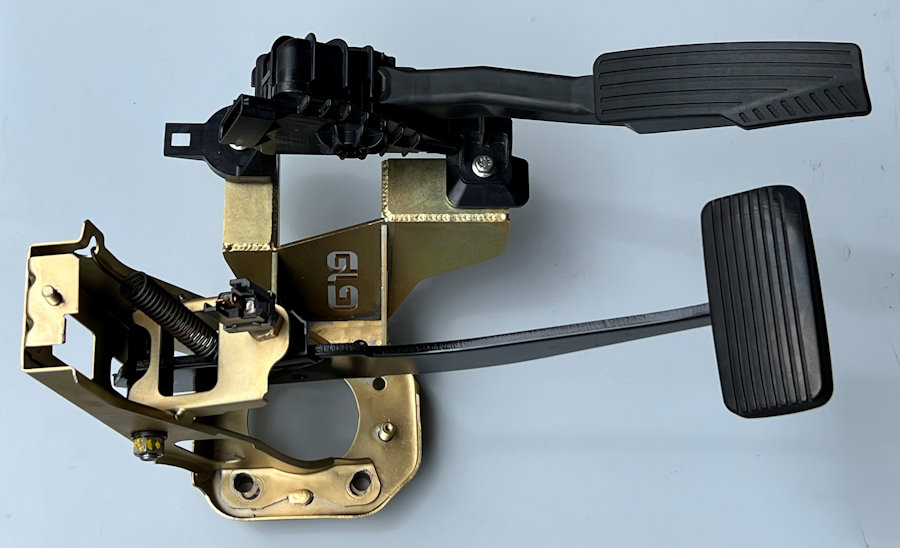

The entertainment system is covered as a separate project. We have installed a 10" touchscreen with Apple CarPlay and Android Auto support above the 'tombstone'.
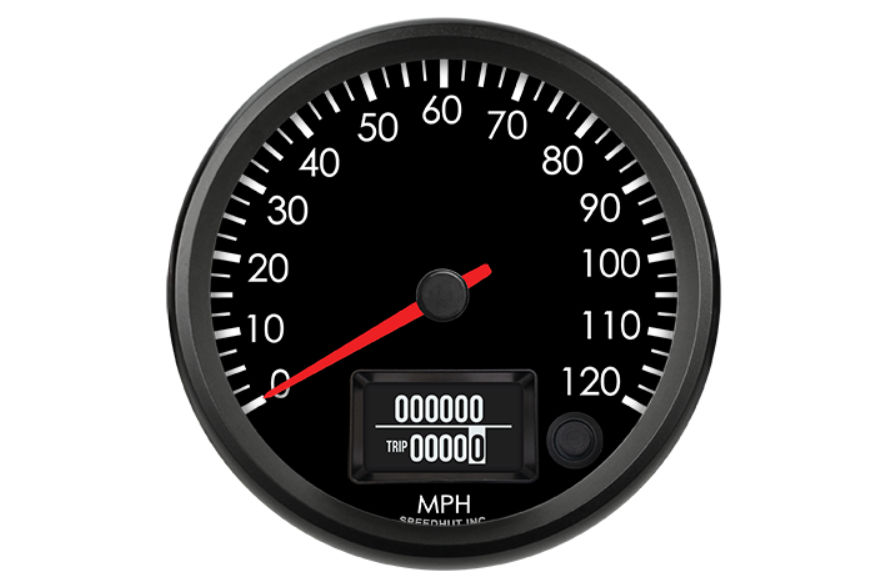
In both the MX-5e and OSSEV®, we are retaining physical switches and buttons for all of the EV's main features. There are no touch screens used (entertainment system aside).

The interior features personalised ambient lighting and we have developed our own replacement light units.

We have fitted a pair of second-hand MX-5 mk 2.5 black leather seats which are in excellent condition and have been cleaned and refurbished. These have heaters and will be included in our rewiring project.
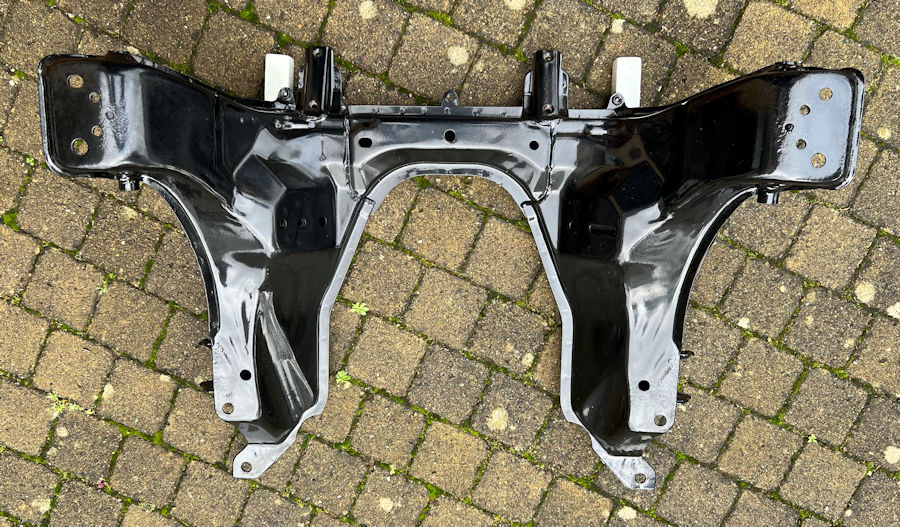
We have freshly powder coated front and rear subframes to fit to the car.
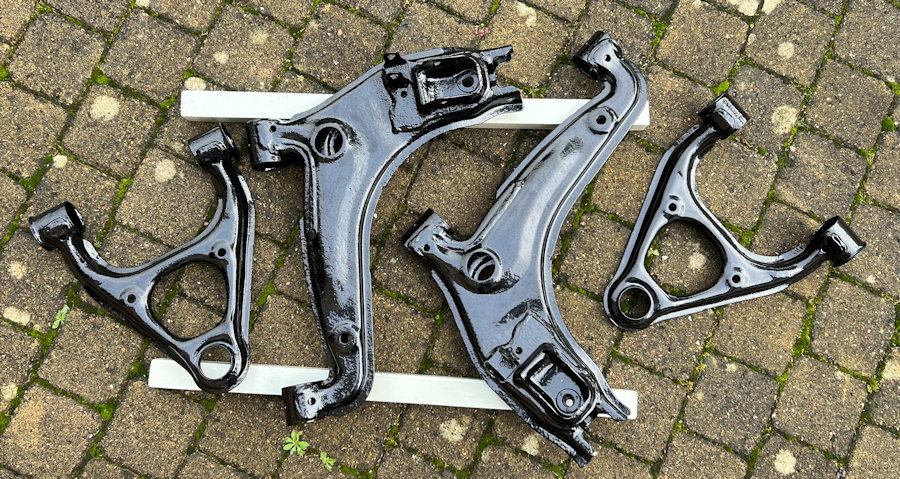
We also have powder coated suspension arms and these will be fitted new ball joints. We are using new nuts and bolts for the suspension too.
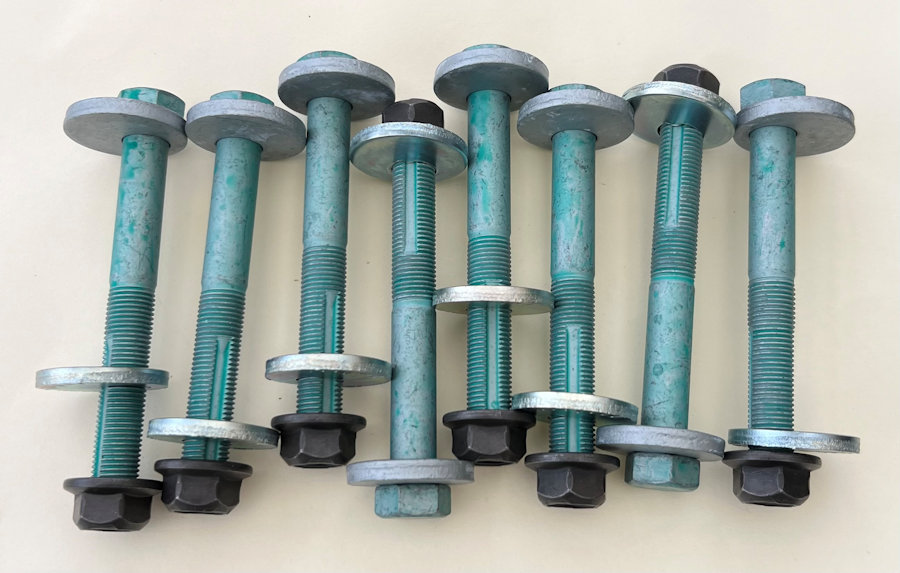
We are fitting all new alignment bolts and will get the suspension geometry professionally set up. These eight alignment bolts weigh 1250g.
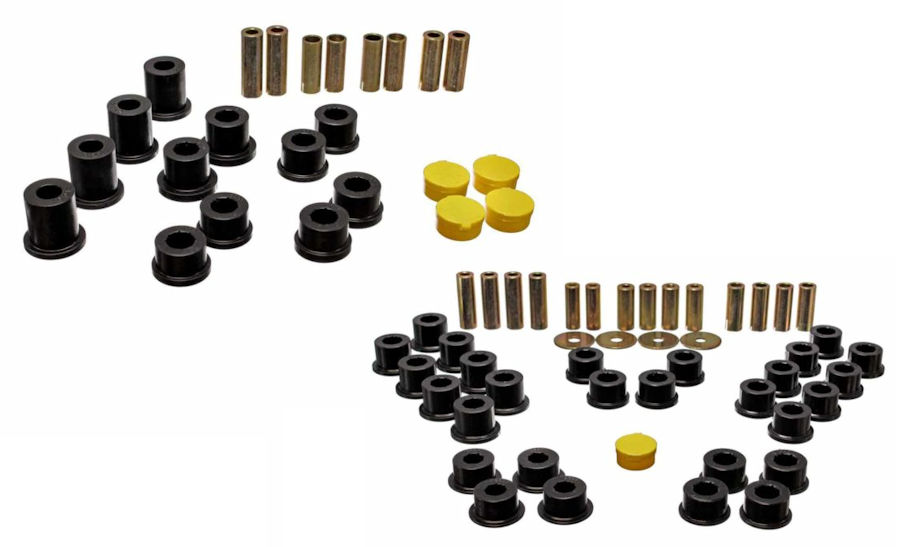
We are fitting all new Energy Suspension bushes front and rear. These are not quite as compliant as the factory rubber bushes but, they are much easier to fit and will result in improved handling.
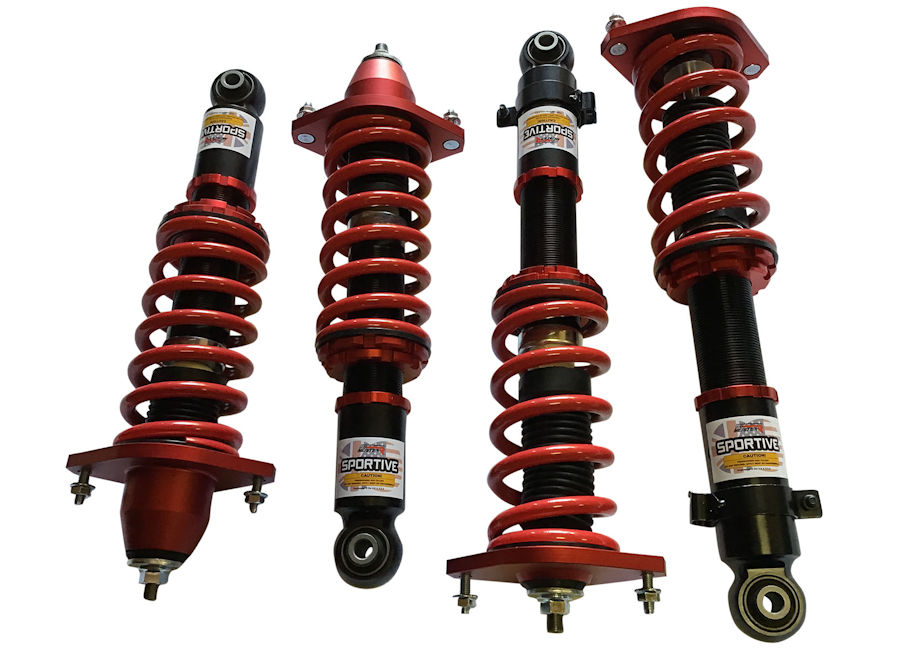
We have fitted MeisterR Sportive Coilovers. We know these work really well and provide a great ride because we fitted them to Ethan's Yoko.
After looking at the various motor options, our favourite for the OSSEV® is still the Telsa SDU but, we were strongly advised by Fellten not to modify the rear sub-frame if we wanted to register our MX-5e as an EV. With this advice taken onboard, we decided to use the Nissan Leaf motor in the MX-5e and to use a reduction gearbox to drive the propshaft and an upgraded LSD differential.
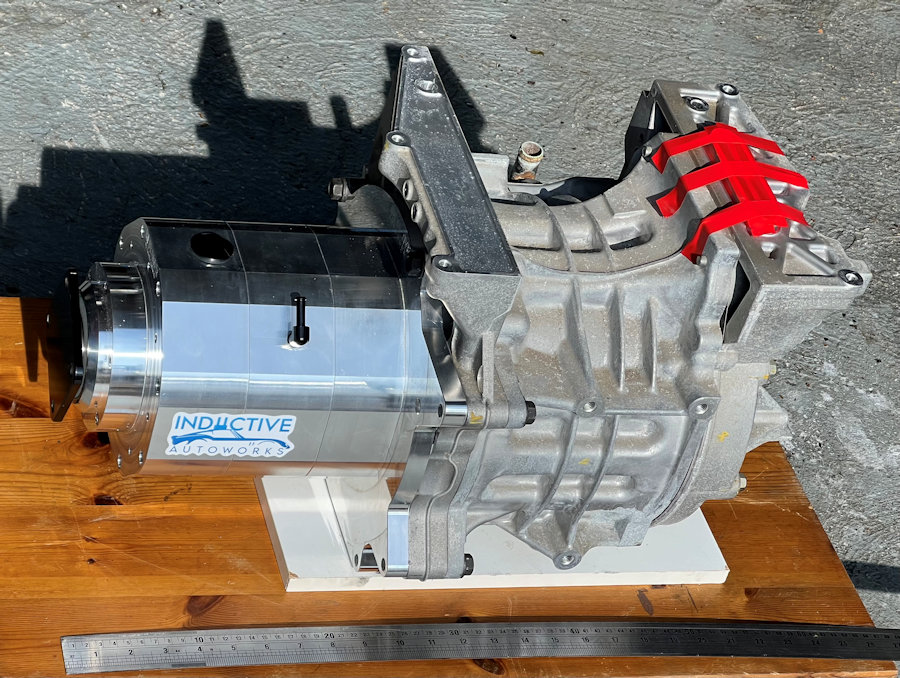
Our MX-5e is using the EM57 motor and standard ZE1 inverter (3rd generation Nissan Leaf), providing 110kW (149bhp) / 320Nm and spinning to 10,390rpm. Once we have it running we will look at fitting the Nissan Leaf Gen 2 'open inverter' controller to upgrade this to 136kW (182bhp) / 350 Nm. If we really feel the need for a bit more power, we can fit the Nissan Leaf e+ motor and inverter giving 160kW (215bhp) / 340Nm and spinning to 11,330rpm. This will increase the top speed from 109mph to 119mph and this is why we have fitted a 120mph speedometer.
We are using a fixed ratio reduction gearbox by Inductive Autoworks fixed to the output shaft of the Nissan Leaf motor, with a 1.8 : 1 reduction ratio. This is connected to the MX-5 LSD differential using a custom propshaft. The output flange matches the differential input flange with four M10 bolts on a 96mm PCD.

We don't need the MX-5e to go much faster than 100mph, so our differential ratio of about 3.636 : 1 is perfect and gives a top speed of 109mph (119mph with the Nissan Leaf e+ motor and inverter).
The 1.6 differential fitted to our car when we bought it used a 6" crown gear and this is not as strong as later versions, which used a 7" crown gear. This is much stronger and good for 400+bhp when properly upgraded. The LSD differential is documented in a lot more detail on our diff refurbishment & upgrade project page.
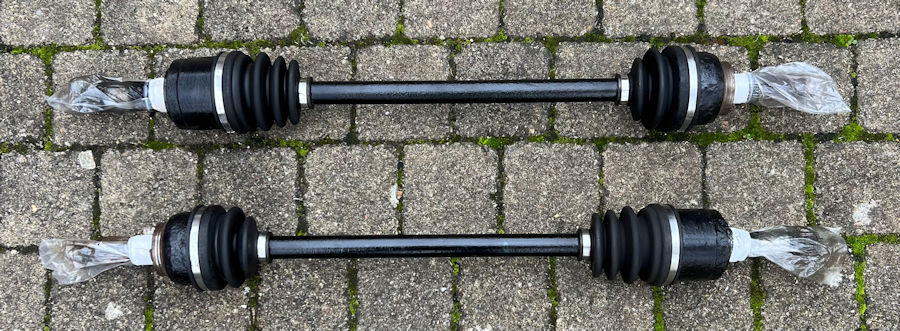
The diff came with some matching driveshafts, which we have now refurbished. Fitting these meant replacing the rear wheel bearings too.
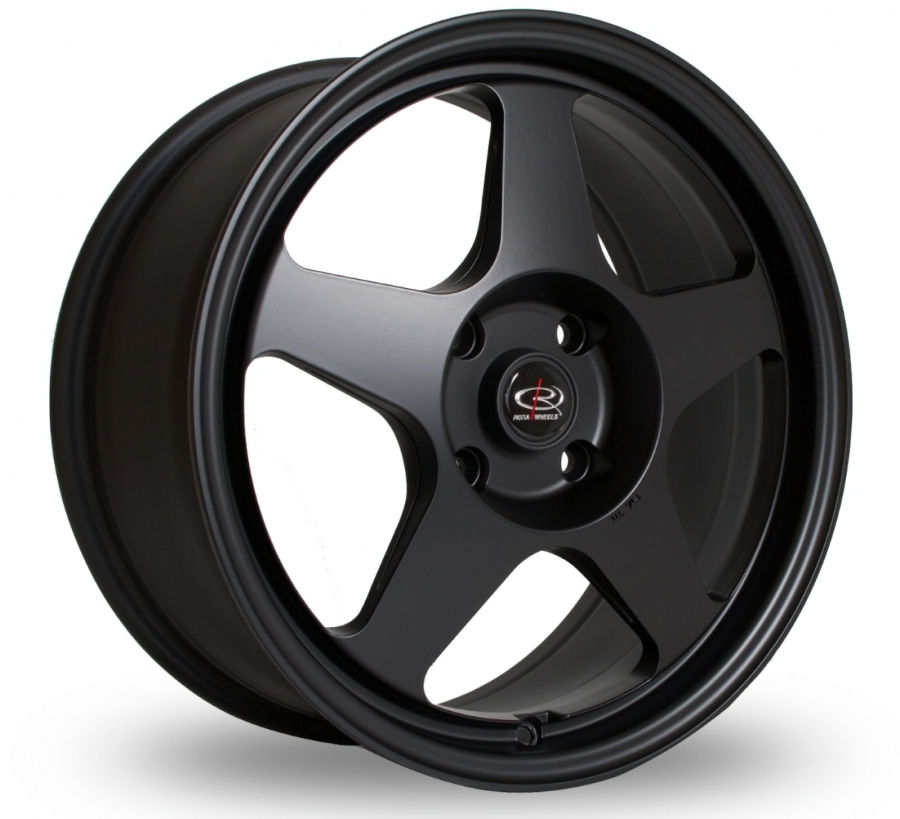
We have fitted these Rota Slipstream wheels in black. These are 15" × 7" with an ET40 offset. We wanted a little bit more width to help get the power down at the rear. Ideally, the front wheels would remain at 6" wide but, different sized wheels front and rear complicates things. These wheels weigh 5.9kg each, including the Tyre Pressure Monitoring System (TPMS).
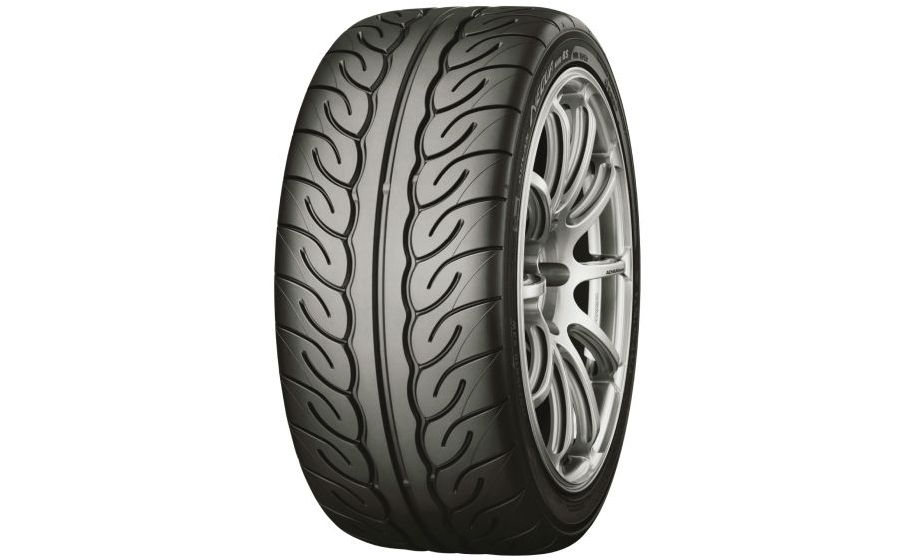
We have fitted Yokohama Advan Neova AD08RS tyres in 205/50 R15 86V spec. Each tyre weighs 9.3kg. They provide excellent grip (in the dry) and very good feedback through the steering wheel. They are very progressive on the limit too.